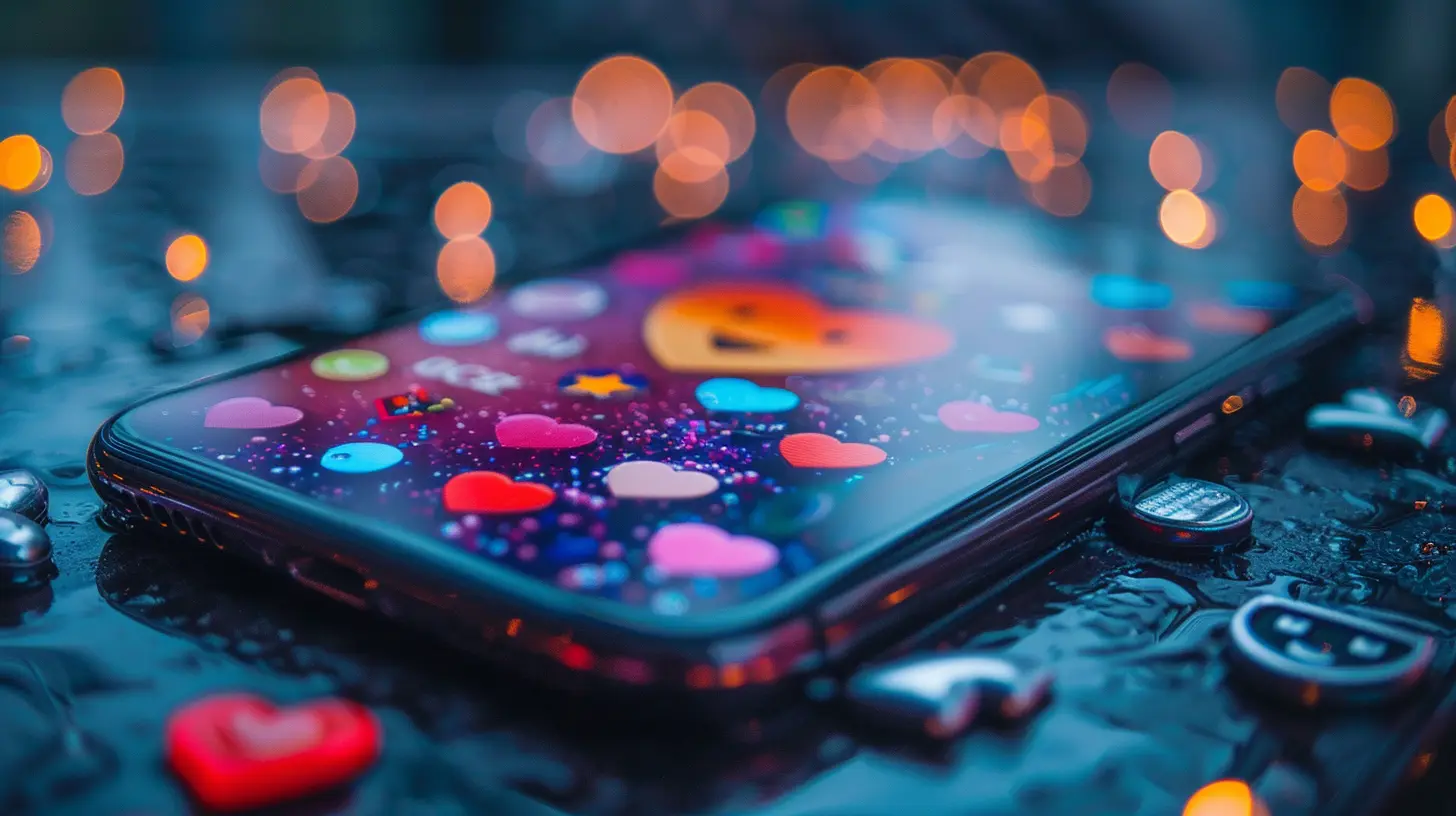Why Overspending on Social Media Could Be Keeping You in Debt
25 August 2025
The Digital Trap: Spending Beyond Your Means
Have you ever scrolled through Instagram or TikTok and found yourself suddenly needing the latest gadget, trendy outfit, or luxury vacation? You're not alone. Social media has a sneaky way of making us crave things we never even thought about before.
From influencers flaunting designer bags to friends posting about their exotic getaways, FOMO (Fear of Missing Out) kicks in hard. And before you know it, you’re clicking "Add to Cart" or booking that expensive weekend trip—without a second thought about your budget.
But here’s the hard truth: overspending on social media could be the reason your bank account is running on fumes and your debt is piling up.
Let’s break it down, shall we? 
The Social Media Spending Illusion
1. The Comparison Game: A Dangerous Spiral
Social media is like a never-ending highlight reel. No one posts about their credit card statements or the stress of making ends meet. Instead, you see influencers unboxing luxury goodies, friends showing off their new cars, and vacation pictures that look like they belong in a travel magazine.And what happens next? You start measuring your life against someone else’s best moments. Suddenly, your perfectly good handbag feels outdated, your car isn’t fancy enough, and your home doesn’t have that Pinterest-perfect aesthetic.
To keep up, you swipe that credit card—again and again. But keeping up with a lifestyle that isn’t yours can send you deep into debt faster than you realize.
2. The "Buy Now, Pay Later" Trap
BNPL (Buy Now, Pay Later) services are everywhere now—Klarna, Afterpay, Affirm—you name it. They make shopping feel too easy.“Oh, it’s just four small payments!”
Sounds harmless, right? But the problem is that these small payments stack up quickly. Before you know it, you have multiple BNPL balances due every month, on top of your usual bills and expenses.
And if you miss a payment? Say hello to late fees, higher interest rates, and a bigger hole in your wallet.
3. Influencer Marketing: The Modern Sales Pitch
Gone are the days of traditional advertisements. Now, influencers do the selling, and they do it well.Whether it’s a new skincare routine, a must-have fashion piece, or the latest tech gadget, social media makes everything look irresistible. And because influencers feel like friends, their recommendations hit harder than a conventional ad.
But here’s the kicker: Many of these influencers are paid big money to promote products. They aren’t always giving unbiased opinions—they’re working a job. Meanwhile, you're spending money you might not have just because they made it seem like a necessity. 
How Social Media Makes Spending Addictive
1. Instant Gratification: The Dopamine Rush
Shopping on social media isn’t just convenient—it’s exciting. The moment you buy something, your brain releases dopamine (the "feel-good" chemical). It’s the same rush you get from eating chocolate or winning a game.But just like a sugar high, that dopamine hit fades fast. And what do you do? You chase the next purchase to feel that excitement all over again.
It’s a cycle that keeps you spending—without ever feeling truly satisfied.
2. The Seamless Checkout (Too Easy for Your Own Good)
Ever noticed how apps like Instagram and TikTok now have built-in shopping features? You don’t even have to leave the app anymore. One tap, and boom—the purchase is complete.This seamless checkout process removes the friction from spending. You don’t get a moment to pause and think, “Do I really need this?” Instead, it's impulse buying on autopilot.
And guess what? Retailers love this. The less time you have to reconsider, the more likely you are to splurge.
3. Targeted Ads: They Know You Better Than You Do
Ever searched for something once and then saw ads for it everywhere? That’s not magic—it’s data tracking. Social media platforms track your online behavior and serve up ads customized just for you.You might think you’re making your own purchasing decisions, but in reality, algorithms are nudging you, whispering, “Go on, buy it.”
And let’s be honest—sometimes, the ads are so perfectly tailored that resistance feels almost impossible. 
Breaking Free: How to Stop Overspending
1. Unfollow Temptation
If an influencer constantly makes you feel like your life isn’t enough unless you buy what they're selling, unfollow them. Your mental health (and bank account) will thank you.Instead, follow content that inspires you to save, invest, and spend wisely. There are plenty of financial educators on social media who share real money-saving tips.
2. Set a 24-Hour Rule
Impulse buying is the culprit behind many financial regrets. Before making any purchase, wait 24 hours. This gives you time to ask yourself:- Do I really need this?
- Can I actually afford this without going into debt?
- Will this add real value to my life?
If after 24 hours you still truly want it—and you can afford it—then go ahead. But more often than not, you’ll find the craving has passed.
3. Create a Budget (And Stick to It)
Budgets aren’t about restrictions—they’re about freedom. When you give every dollar a job, you stop wondering where your money went at the end of the month.Allocate a set amount for "fun spending" and make sure it fits within your financial goals. If it’s not in the budget, it's a no-go.
4. Remove Saved Payment Methods
If your credit card details are already saved on your favorite shopping apps, spending becomes too easy. Remove them. That extra step of manually entering your card details gives you a moment to pause and rethink the purchase.5. Focus on Long-Term Financial Goals
Ask yourself:- Do I want short-term excitement or long-term financial security?
- Would I rather have a closet full of trendy clothes or a savings account that provides peace of mind?
- Is this purchase helping me get closer to my financial goals or further away?
When you shift your mindset to long-term wealth, resisting those social media splurges becomes a lot easier. 
Final Thoughts: Be the Boss of Your Wallet
Social media is a powerful tool, but it shouldn’t have power over your finances.Remember, what you see online isn’t always real life—and keeping up with someone else’s “highlight reel” can leave you drowning in debt.
So the next time you feel the itch to spend, ask yourself: Is this bringing me closer to my goals or pulling me further into debt?
Because at the end of the day, financial freedom > fleeting trends.
all images in this post were generated using AI tools
Category:
Debt Free LivingAuthor:

Knight Barrett
Discussion
rate this article
1 comments
Layne Nguyen
Great insights! It's crucial to recognize how social media spending can impact finances. Adopting mindful budgeting strategies can help regain control over debt.
September 4, 2025 at 10:48 AM

Knight Barrett
Thank you! I'm glad you found the insights valuable. Mindful budgeting is indeed essential for managing social media spending and overall financial health.


